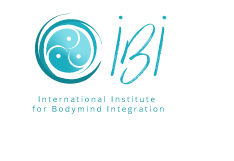“Just as anxiety can feed on itself, so can courage.”
― John J. Ratey
Reasons to be Anxious
Everyone is concerned at times. As we grow older, our concerns also increase. Finance, health, and children can all be things that keep us awake at night. In many ways, worrying is a positive thing. It can be the motivational force that helps us solve a problem or persist in a project until we find a solution. But when worries get excessive and interfere with normal daily functioning, it can be a sign of a more serious anxiety disorder.
Judith Blackstone in “Trauma and the unbound body” says: “Anxiety is also a direct result of trauma. If our childhood environment is particularly abusive or unpredictable, we may become chronically anxious and vigilant to our surroundings. Any memory of having been overpowered or in any way abused may produce an ongoing fear of the recurrence of that trauma.
Over time, anxiety may become a chronically held emotional state within our body and hypervigilance may become a rigidly held pattern within our senses. Our focus may become chronically imbalanced to the world outside of ourselves, rather than to the internal space of our own body. We all live to some extent on the surface of ourselves, but in a hypervigilant state, our focus extends in a static, ongoing way out into the environment.
The movement of anxiety within the body is upward. We have the saying, “My heart was in my throat.” When we are anxious, we feel that the internal space of our chest lifts upward. We tend to experience our breath only in our upper chest and to breathe in short gasps. If we are anxious for much of our childhood, this upward lift and constricted breath becomes a chronic pattern.
Just as with all of our holding patterns, we may also mirror our parents’ held pattern of anxiety. As an emotional condition, anxiety can permeate our environment. If our parents were often anxious, then the air we breathe as children and the atmosphere that we absorb within our body may be permeated with anxiety. This emotion may become held within our body and in our memory of our surroundings. As adults, we carry this internal feeling and external atmosphere of anxiety with us wherever we go, even when our present circumstances do not call for anxiety at all.”
Symptoms of Anxiety
General symptoms of anxiety, as opposed to anxiety, include:
- Physical: Shortness of breath, pounding heart, shaking / trembling
- Emotional: Difficulty concentrating, Irritability, Expecting the worst, Fear of dying
- Behavioral: Social isolation / withdrawal, Difficulty sleeping, or sleeping too much, Changes in appetite
Types of Anxiety Disorders
The following are five types of anxiety disorders that are common in adults (click on the links to learn more):
- Obsessive-Compulsive Disorder
- Generalized Anxiety Disorder
- Social Phobia (Social Anxiety Disorder)
- Panic disorder
- Post-traumatic stress disorder
The importance of treating anxiety disorders
Untreated anxiety disorders can have important effects on a person’s life, including poor social relationships, depression, poor academic / job performance, and can lead to other disorders, such as depression or substance abuse.
If you recognize yourself in one of these symptoms, or recognize a neighbor in them, an evaluation is recommended. At the Institute for Bodymind Integration we use a biopsychosocial – holistic / integrative approach that approaches the psychosocial needs as well as the physical, psychological and spiritual factors of the individual and the family.
Appropriate intervention for anxiety disorders include:
- Individual Therapy: Individual work focuses on developing specific anxiety management skills, while also addressing the struggles of everyday stressors and low self-esteem (often associated with the diagnosis of anxiety)
- Relaxation and body awareness: Like individual therapy, relaxation, grounding and body awareness works by teaching you specific management skills. We use techniques that make you aware of the inner processes that contribute to fear, and thus teach you to have better control over these processes. In the work you learn the practice of inhabiting your body. This can be used specifically to counter the upward displacement in the body that is often caused by anxiety.
- Group Therapy: Groups provide safe and appropriate social training where you can receive feedback from other group members and professionals on how to regulate your behavior.
In summary:
An anxiety disorder is a mental illness that is characterized by the presence of an unhealthy fear. If a fear has no real ground and the person involved experiences social problems, it is a disorder. There are several anxiety disorders (Acute stress disorder, Agoraphobia (without history of panic disorder), Anxiety disorder due to a somatic condition, Generalized anxiety disorder, Obsessive-compulsive disorder, Panic disorder (with or without agoraphobia), Post-traumatic stress disorder, Specific phobia (e.g. spider phobia), Social phobia, Anxiety disorder due to alcohol or drugs, Anxiety disorder not otherwise defined (residual group)).
Did you like this article? Share it in:





